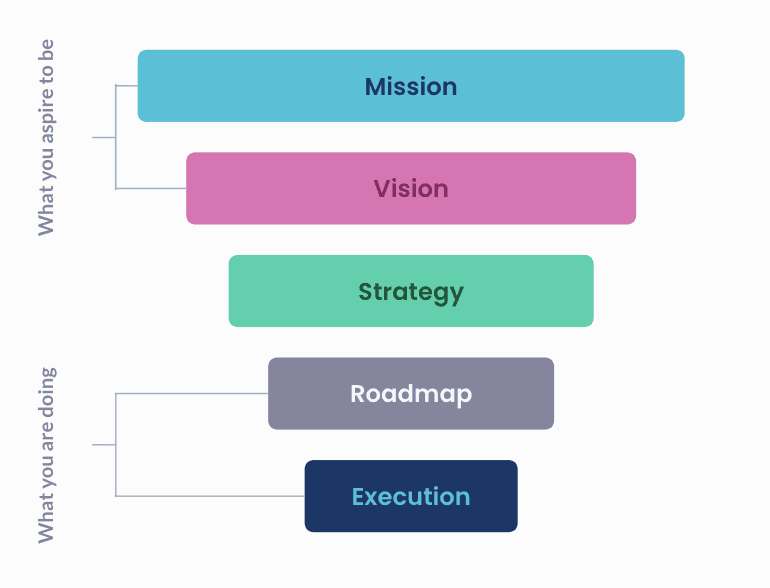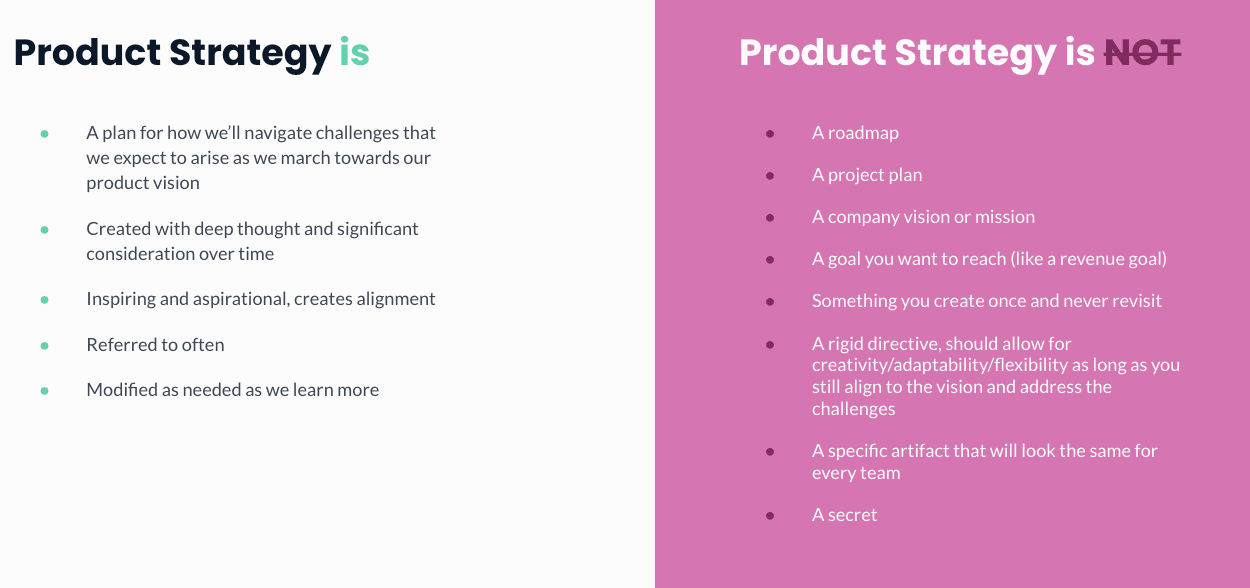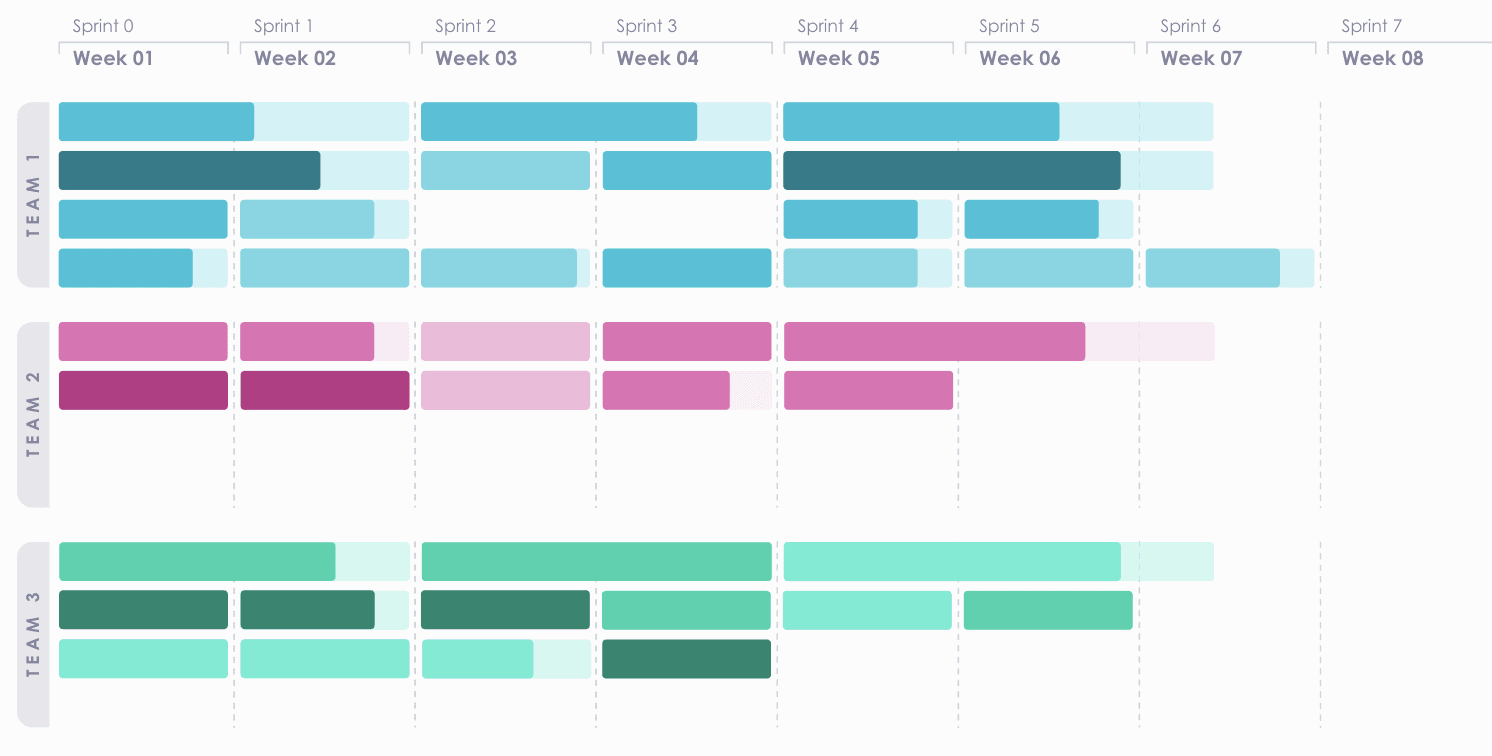Updated: August 21, 2024- 7 min read
As a product leader, you're in charge of driving innovation, ensuring your products serve your customers and fulfill your company's goals. Understanding the nuances between Product Strategy and Product Roadmap is key.

Product strategy provides you with the overarching vision, the "what" and "why" of your product journey and the roadmap offers a detailed guide on "how" and "when" to achieve that vision.
While both tools are indispensable, recognizing their distinctions and mastering the art of harmonizing them can significantly propel your product's success. So, are you adept at differentiating and leveraging Product Strategy vs. Product Roadmap in your product journey?

Product Strategy: Setting the North Star
Your product strategy is your guiding north star in the product universe. It's more than just planning; it's about crafting a narrative for your product's future. This is where you capture the essence of your product. Why does it exist? Whom does it serve? How will it evolve to stay ahead in the game? That's what your product strategy sets out to answer.
So, what really is your Product Strategy? It’s your master plan. It’s the macro vision that dictates the journey of your product over time, ensuring it resonates with your target audience and aligns with your company’s objectives.

Dive into its essential components:
Market Research
Understanding your audience is key - their needs, challenges, and desires. Know them like the back of your hand.
Competitive Analysis
Identify where your competitors stand. What are they excelling at? Where are they faltering? This knowledge can be your power.
Product Vision
Craft a magnetic vision for your product - a north star that keeps your team aligned and motivated.
Product Goals
Set tangible, actionable goals. Maybe it's capturing a bigger market share, or perhaps it's ramping up user satisfaction. Define it, track it, and achieve it.
Product Positioning
Define your unique space in the market. What's that one thing that makes you stand out? Harness it.
Product Roadmap
It's the tactical game plan. The step-by-step route to actualizing your product strategy.
Roadmap: The step-by-step journey
The product strategy sets your direction, while the roadmap provides the tools and plan to navigate there. It transforms broad ideas into actionable steps, organized thoughtfully by importance, order, and available resources.
At its core, a product roadmap is the tactical blueprint that translates the strategy into action. It's the chronological representation of your journey, showcasing what needs to be achieved, when, and how.

Essential elements of a roadmap are:
Milestones
Think of these as landmark achievements or pit stops on your journey.
Timeline
Your projected journey time frame, detailing when each feature or task is slated for release.
Dependencies
These are your checkpoints, ensuring that one task's completion triggers the next.
Prioritization
The art of sequencing ensures that resources are aligned to the most critical tasks first.
Crafting a roadmap requires a delicate balancing act. It starts with aligning your strategy-derived milestones, plotting them on a timeline, factoring in dependencies, and then weaving them into a sequence that delivers maximum value at optimal speed.
Together, your product strategy and roadmap create a cohesive narrative. While the strategy paints the picture of the future, the roadmap translates that vision into tangible steps, ensuring your product not only addresses customer needs but does so in a manner aligned with the broader business objectives.
Product Strategy vs. Product Roadmap: Differences
While both tools are invaluable in product development, understanding their distinct characteristics can amplify your efficiency and effectiveness in the role.

Timeframe
The product strategy is your long-term blueprint, guiding the evolution and growth trajectory of your product over extended periods. It presents the larger vision and provides direction.
On the other hand, the product roadmap is more about immediacy. It's your short-term action plan, laying out the journey towards your product goals, often in a more time-bound context.
Level of detail
When you look at your product strategy, it offers a bird's-eye view. It gives you the overarching objectives and the grand vision but often without intricate details.
In contrast, the product roadmap delves deep. It offers a granular perspective, where you get to see specific tasks, actions, milestones, and even potential obstacles.
Focus
Your product strategy is predominantly outward-facing. It concentrates on understanding the target audience and elucidating the unique value the product delivers to this audience.
The roadmap, however, is more about the internal mechanics. It zeros in on the tangible steps, tasks, and milestones key for turning the strategic vision into a reality.
Flexibility
Given that a product strategy is meant to span over a longer timeframe, it's designed to be adaptable. It can pivot in response to shifting market dynamics, changing customer needs, or new organizational goals. The product roadmap, due to its specificity and short-term nature, is generally more fixed. It has set tasks and milestones that often adhere to a predetermined timeline, making it less fluid than its strategic counterpart.
Integrating Product Strategy and Roadmap
It's important for product leaders to understand how these two elements effectively work together to develop a product that meets customer needs and aligns with the company's goals.

1. Get alignment
Always ensure that your product roadmap mirrors the intentions set forth in your product strategy. This alignment guarantees that the actionable steps you're taking in the short term are always in service of your long-term aspirations.
2. Involve stakeholders
Engage all pivotal stakeholders from the inception phase of both your product strategy and roadmap. This collective involvement not only fosters clarity and commitment but also ensures you're tapping into diverse insights and expertise.
3. Share your story
Your product strategy is the narrative - the 'why' and 'what'. Share this with stakeholders to ensure they're on board with the vision. Meanwhile, the roadmap, with its clear 'how' and 'when', becomes the go-to reference for your broader organization, keeping everyone informed and aligned with the product journey.
4. Keep it updated
Whether it's market shifts, technological innovations, or internal company changes, adaptability is key. Regularly revisit, review, and if necessary, recalibrate both your strategy and roadmap to remain relevant and effective.
5. Monitor progress
Use relevant metrics and key metrics to gauge the effectiveness of your initiatives. Keeping tabs on these indicators ensures you're on track with both the strategic intentions and the tactical actions laid out in your roadmap.
6. Be strategic & tactical
While the product strategy assists in charting out the broader direction and purpose, let your roadmap be the hands-on guide helping you navigate the immediate challenges and tasks.
Conclusion
Understanding the interplay between these tools is essential. While they serve distinct purposes, they are intrinsically linked. The roadmap breathes life into the product strategy, breaking down its overarching vision into tangible, actionable steps.
Adaptability is also key. Market conditions, stakeholder feedback, and internal changes can lead to shifts in direction.
In your role, let this dual approach be your guide, leading you toward creating products that not only fulfill market demands but also echo the company's ambitions.
Learn more with Product School
Ready to ace your Product Roadmap? Dive into our Product Leader Certification (PLC), crafted by top-tier Product Managers. This program not only hones the specific competencies for the role but also equips you with the practical know-how to spearhead product teams confidently.
Discover the PLC today, and take the first step towards becoming a strategic, successful, and influential Product Leader. Schedule a call today to find out more.
Updated: August 21, 2024





